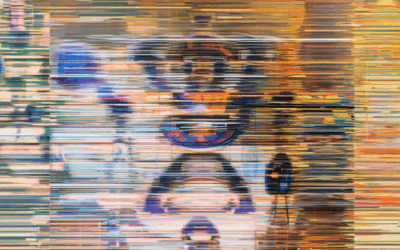The world of music is vast and ever-evolving, offering countless genres that often blur boundaries between cultures and styles. One such fascinating intersection is the realm of soul and jazz fusion music podcasts, where the soulful grooves of rhythm and blues meet the intricate improvisations of jazz, creating a unique auditory experience. For those who find themselves drawn to the rich textures of soul music but yearn for the complexity and innovation of jazz fusion, these podcasts offer a perfect blend of both worlds.

Why Was Fusion a Controversial Style of Jazz?
Fusion, a genre that emerged in the 1970s, blended jazz with elements from rock, funk, and even classical music, becoming a polarizing force in the jazz community. Its controversy arose from several factors:1. **Genre Blending**: Fusion’s integration of electric instruments and non-traditional elements deviated from conventional jazz, upsetting purists who favored acoustic improvisation and strict structures.2. **Countercultural Associations**: The genre’s popularity coincided with the counterculture movement, often linked with drug use and experimental lifestyles, leading to criticism from more conservative sectors.3. **Technical Complexity**: Fusion musicians showcased exceptional virtuosity, which, while admired, sometimes alienated audiences seeking more accessible music.4. **Financial Struggles**: Fusion artists faced limited record label support, leading to compromises and a perception of commercialization, further fueling negativity.5. **Cultural Divide**: Critics and fans differed sharply, with some viewing fusion as innovative expansion and others as a departure from jazz’s roots.Over time, fusion’s influence grew beyond jazz, impacting rock, pop, and hip-hop, though its initial backlash reflected broader cultural shifts and resistance to change.
Soul Fusion Music
Soul fusion music is a dynamic and electrifying genre that seamlessly blends elements of funk, soul, and rhythm & blues (R&B), creating a sound that resonates deeply with music lovers of all ages. This genre is characterized by its infectious grooves, soulful vocals, and powerful instrumentation, making it a favorite among fans of retro and classic music.
Characteristics of Soul Fusion Music
- Genre Blend: Soul fusion takes inspiration from funk, soul, and R&B, resulting in a rich, layered sound that feels both nostalgic and fresh.
- Emotional Depth: The music often carries a deep sense of emotion, whether through heartfelt lyrics or passionate performances.
- Versatility: Soul fusion can be found in various settings, from live performances to studio recordings, making it adaptable to different audiences and environments.
Why Soul Fusion Music Stands Out
Soul fusion music stands out due to its ability to connect with listeners on a personal level. Its hypnotic rhythms and soulful melodies create a unique atmosphere that can transport you to a world of pure enjoyment and musical freedom.
Examples of Soul Fusion Music
Soul fusion has been popularized by legendary artists and bands over the years. Some notable names include:
- Tiger Funk: A leading platform celebrating the history and culture of funk, soul, and jazz fusion music. Their extensive collection of articles, artist profiles, and album reviews provides a comprehensive exploration of the genre.
- Other Artists: Musicians like Curtis Mayfield, James Brown, and Stevie Wonder have also contributed significantly to the soul fusion movement, blending their unique styles with traditional soul elements.
Soul fusion music continues to evolve, influencing new generations of artists and fans. Its timeless appeal ensures that this genre remains a staple in the world of music, offering something for everyone to enjoy.

Soul Music and Its Relationship with Jazz
Soul music and jazz share a deep-rooted connection, particularly in their African American origins and their reliance on improvisation. However, they are distinct genres with unique characteristics.
Connection Between Soul and Jazz
Both genres emerged from African American musical traditions, drawing from gospel, blues, and folk music. Soul music, which began in the late 1950s and 1960s, was heavily influenced by jazz in terms of instrumentation and style. Many soul musicians, such as Miles Davis and John Coltrane, have had a significant influence on both genres.
Differences Between Soul and Jazz
While soul and jazz share common elements like improvisation and emotional expression, they differ in their structure and focus. Soul music often emphasizes strong rhythms, call-and-response patterns, and heartfelt lyrics, creating a more narrative and personal expression. Jazz, on the other hand, places greater emphasis on technical skill, complex harmonies, and instrumental virtuosity.
Key Artists Bridging the Gap
Artists like Prince, Stevie Wonder, and Donnie Hathaway have successfully blended soul and jazz, creating a unique fusion that highlights the shared ground between the two genres.
Shared Influences
Both genres draw from African musical traditions, including polyrhythms and call-and-response techniques. The use of instruments like the Hammond organ and saxophone in soul music further connects the two.
Conclusion
While soul and jazz are distinct, their shared history and influences make them interconnected. Both continue to evolve, inspiring new generations of musicians and fans.
For more insights into the intersection of soul and jazz, visit Tiger Funk , where we explore the rich history and cultural significance of these genres.

What is the Difference Between Jazz and Jazz Fusion?
Jazz and jazz fusion are two distinct yet interconnected genres of music that share a common foundation but diverge significantly in their approach and sound. Below is a detailed breakdown of their differences and similarities.
Overview of Jazz
Jazz is a genre of music that originated in the African-American communities of New Orleans in the late 19th and early 20th centuries. It is characterized by its improvisational nature, syncopated rhythms, and call-and-response patterns. Jazz is rooted in blues and ragtime and has evolved over the years into various subgenres, including bebop, cool jazz, hard bop, and free jazz.Key Characteristics of Jazz:- Improvization:A hallmark of jazz, musicians often improvise solos and harmonies on the spot.- Syncopation:Rhythms often emphasize off-beat timing, giving music a driving pulse.- Call-and-Response:A dialogue between soloist and rhythm section, common in many jazz pieces.- Instrumentation:Traditionally, jazz bands include a piano, double bass, drums, and a lead vocalist, though modern jazz can feature a variety of instruments.Notable Artists:- Miles Davis- John Coltrane- Louis Armstrong- Thelonious MonkProminent Albums:- Miles Davis – Kind of Blue– John Coltrane – My Favorite Things
Overview of Jazz Fusion
Jazz fusion is a genre that emerged in the late 1960s and 1970s, blending jazz with rock, funk, and Latin music. It is characterized by its use of extended instrumental solos, complex harmonies, and a mix of traditional jazz elements with modern rock influences.Key Characteristics of Jazz Fusion:- Hybrid Sound:Fusion combines the improvisational aspects of jazz with the energy and instrumentation of rock.- Electric Instruments:Guitar, electric piano, and synthesizers are common in fusion bands.- Latin Influences:Many fusion bands incorporate elements from Latin music, particularly Afro-Cuban rhythms.- Progessive Solos:Fusion pieces often feature lengthy, intricate solos showcasing virtuosic skills.Notable Artists:- Herbie Hancock- Weather Report- Mahavishnu Orchestra- Chick CoreaProminent Albums:- Herbie Hancock – Maiden Voyage– Weather Report – Heavy Metal Time– Chick Corea – Elektric Band
Key Differences
While both genres share a love for improvisation and complex rhythms, there are significant differences in their composition, instrumentation, and audience appeal.1. **Composition:** – Jazz often relies on structured compositions, though improvisation is a key part of performances. – Jazz fusion typically features more extensive improvisation and less rigid song structures.2. **Instrumentation:** – Traditional jazz bands usually include acoustic instruments like piano and double bass. – Fusion bands frequently use electric instruments like guitar, electric piano, and synthesizers.3. **Audience Appeal:** – Jazz has a broad appeal due to its emotional depth and storytelling qualities. – Fusion tends to attract audiences familiar with rock and progressive music, appealing to fans of high-energy performances.4. **Cultural Impact:** – Jazz has had a profound influence on nearly every musical genre that followed. – Fusion played a crucial role in expanding the boundaries of popular music, blending jazz with rock, funk, and world music.
Why Both Genres Matter
Both jazz and jazz fusion contribute uniquely to the tapestry of modern music. Jazz serves as a foundation for innovation in countless genres, while fusion pushes boundaries by combining diverse sounds. Whether you’re a fan of straight-ahead jazz or experimental fusion, both offer timeless listening experiences.By exploring both genres, listeners gain a deeper appreciation for the versatility of jazz and its ability to evolve alongside other musical traditions. At Tiger Funk, we celebrate the artistry of these genres and invite you to discover the stories behind the music. Explore our articles on jazz history, fusion subgenres, and interviews with legendary artists to dive deeper into this fascinating world of sound.
Which Artist is Known for Fusion Jazz?
Fusion jazz emerged in the late 1960s, blending traditional jazz elements with influences from rock, funk, and even classical music. Among the most celebrated artists associated with this genre are:1. **Miles Davis**: Renowned for albums like *In a Silent Way* and *Bitches Brew*, Davis pioneered fusion by incorporating electric instruments and rock-inspired rhythms. His innovative approach reshaped the boundaries of jazz.2. **John McLaughlin**: Known for his work with Miles Davis and later as leader of the Mahavishnu Orchestra, McLaughlin’s virtuosic playing and compositions have been integral to fusion jazz.3. **Herbie Hancock**: Famous for his groundbreaking album *Head Hunters*, Hancock brought a deep understanding of funk and improvisation to the fusion scene.4. **Chick Corea**: As a co-founder of Return to Forever and leader of his own ensemble, Corea’s intricate compositions and keyboard skills have solidified his place in fusion jazz history.5. **Weather Report**: Formed by Corea and McLaughlin, this band became synonymous with fusion, combining jazz with progressive rock elements.6. **Joe Zawinul**: Known for his work with both Miles Davis and his own ensemble, Zawinul contributed significantly to the development of fusion through his unique compositions.These artists and their contributions have left an indelible mark on fusion jazz, making them essential figures to study and appreciate the genre’s evolution. For deeper exploration, visit [Tiger Funk](https://tigerfunk.com/) to discover more about these artists and the history of fusion jazz.
Who is the Father of Fusion Music?
Fusion music, a genre that blends elements of jazz, rock, and sometimes classical or world music, has several foundational figures. Among the most recognized names associated with its creation are:- **John McLaughlin**: Often regarded as the father of fusion, McLaughlin co-founded the Mahavishnu Orchestra in 1967, combining jazz with rock and classical influences. His groundbreaking album Absolutely Not(1969) is seen as an early example of fusion.- **Miles Davis**: While not the sole progenitor, Davis significantly contributed to the genre with albums like A Tribute to Jack Johnson(1970) and In a Silent Way(1969), which incorporated rock elements and laid the groundwork for fusion.- **Larry Coryell**: As a guitarist, Coryell was part of the Free Spirits, recording fusion music as early as 1966, predating Davis’s work in the genre.The origins of fusion are debated, but McLaughlin’s innovative approach and the Mahavishnu Orchestra’s influence are often highlighted as pivotal. Their ability to fuse diverse styles set a precedent that other musicians, including Davis and Coryell, built upon.
Conclusion
The father of fusion music can be attributed to John McLaughlin due to his pioneering work with the Mahavishnu Orchestra, though other artists like Miles Davis and Larry Coryell also played significant roles in shaping the genre.




0 Comments